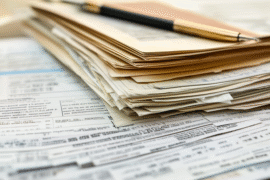This article may contain references to products or services from one or more of our advertisers or partners. We may receive compensation when you click on links to those products or services. Nonetheless, our opinions are our own.
- Top Takeaways About the Cancelled Energy-Saving Program
- Impact of the Program Cancellation on Household Energy Bills
- Alternative Ways to Offset Increased Utility Costs
- Practical Tips to Reduce Energy Usage at Home
- Where to Find Other Incentives for Energy Savings
- Budgeting for Higher Utility Expenses
- Conclusion: Navigating Program Changes with Confidence
- Frequently Asked Questions
- Recommended Reads
Top Takeaways About the Cancelled Energy-Saving Program
The end of a widely used energy-saving initiative has left many homeowners facing higher energy costs. If you’ve previously relied on rebates or energy-saving tools, this shift may require you to reevaluate your monthly utility budget and adopt new strategies to control expenses.
Impact of the Program Cancellation on Household Energy Bills
Why Monthly Costs May Rise
The loss of financial incentives and tools once offered by the energy-saving program may result in higher utility bills. Homeowners are likely to notice:
- Increased Energy Costs: Regular usage now lacks the cushion of rebates or discounts.
- Limited Access to Resources: Helpful data or usage-tracking tools may no longer be available.
- Need for New Strategies: Households may have to seek out new savings methods.
Suggested Adjustments to Save Energy
Here’s a breakdown of some practical changes and their estimated yearly savings:
Estimated Savings from Energy Adjustments
| Action | Estimated Savings |
|---|---|
| Upgrade to LED Bulbs | Up to $100/year |
| Unplug Devices When Not in Use | Up to $50/year |
| Use Smart Thermostats | Up to $200/year |
Taking a proactive approach to reduce energy waste can help offset the loss of program benefits and protect your budget moving forward.
Alternative Ways to Offset Increased Utility Costs
Cost-Saving Tactics for Homeowners
Although the federal program has been discontinued, you still have several options to reduce energy costs:
- Upgrade to Energy-Efficient Appliances: ENERGY STAR-certified models lower power usage.
- Schedule a Home Energy Audit: Some utility providers offer free assessments.
- Install Smart Thermostats: Automate temperature control and reduce heating/cooling waste.
- Explore Renewable Energy Options: Consider rooftop or community solar programs.
- Improve Insulation: Sealing gaps and upgrading insulation helps maintain temperature efficiently.
By adopting these methods, you can stay in control of your energy spending and build a more efficient home long-term.
Practical Tips to Reduce Energy Usage at Home
Easy Actions to Lower Consumption
Even without a professional assessment, you can begin reducing energy use:
- Inspect for Drafts: Check windows, doors, and vents. Use caulk or weather stripping.
- Switch to LED Lighting: These bulbs are long-lasting and use significantly less power.
- Unplug Unused Electronics: Chargers and appliances still draw power when idle.
- Use Programmable Thermostats: Automate settings based on your daily schedule.
- Wash Clothes in Cold Water: Cut back on hot water usage to reduce energy draw.
Track Your Monthly Usage for Better Awareness
| Month | Electricity Usage (kWh) | Gas Usage (Therms) |
|---|---|---|
| January | 350 | 100 |
| February | 300 | 120 |
| March | 280 | 90 |
Monitoring trends can help you spot inefficiencies and take targeted actions to reduce costs.
Where to Find Other Incentives for Energy Savings
Incentives That Still Offer Benefits
You may still be eligible for energy-saving rebates, tax credits, or financing programs. Here are some avenues worth exploring:
- Federal Tax Credits: The IRS provides credits for solar panels, EVs, and efficiency upgrades.
- State & Local Rebates: Visit your state energy office to view current offerings.
- Utility Company Programs: Ask your provider about local rebates or financing plans.
- Energy Efficiency Financing: Many lenders offer favorable terms for home improvements.
Sample Incentive Breakdown
| Incentive Type | Benefit | Potential Savings |
|---|---|---|
| Tax Credit | Reduces your tax liability | Up to 30% of eligible costs |
| State Rebate | Direct refund after upgrade | Varies by state, often hundreds |
| Utility Program | Cashback for improvements | Can save up to 50% on upgrades |
Exploring these options helps you recapture some of the savings lost from the discontinued program.
Budgeting for Higher Utility Expenses
How to Adjust Your Monthly Budget
To avoid surprises, update your household budget to reflect current utility trends. Start by documenting your monthly utility bills and project how rate changes might affect your spending.
Budget Planning Table
| Utility | Current Cost | Projected Cost |
|---|---|---|
| Electricity | $80 | $100 |
| Water | $30 | $35 |
| Gas | $50 | $60 |
Tips for Budgeting Utility Changes
- Review Provider Rate Changes: Contact your utility company for current pricing.
- Evaluate Energy Habits: Compare current usage with past bills to identify spikes.
- Look for Assistance: Some local programs can help with payments or offer rebates.
Being financially prepared helps cushion the impact of lost incentives while encouraging smarter energy use.
Even with the end of programs like the Home Energy Rebate initiative, you can still take control of your energy expenses. By seeking out local and federal incentives, investing in energy efficiency upgrades, and staying proactive with your usage, you can maintain a stable budget and build a more efficient home.
Check for updates from the U.S. Department of Energy and your utility provider regularly. Staying informed and adaptable ensures you’re making the most of every opportunity to save.
Frequently Asked Questions
What energy-saving program was cut, and why?
A widely used program helping homeowners lower utility bills was discontinued due to funding limits and shifting priorities at the federal level.
How will this affect my energy bills?
Expect potential increases, as rebates and data tools used to reduce energy usage are no longer provided.
Are there alternatives available for energy savings?
Yes. Utility companies, state agencies, and local nonprofits offer rebate programs and support for energy efficiency.
What can I do to reduce my energy consumption?
Adopt simple solutions like LED bulbs, smart thermostats, insulation upgrades, and cold water laundry habits.

Reviewed and edited by Albert Fang.
See a typo or want to suggest an edit/revision to the content? Use the comment form below for feedback.
At FangWallet, we value editorial integrity and open collaboration in curating quality content for readers to enjoy. Much appreciated for the assist.
Did you like our article and find it insightful? We encourage sharing the article link with family and friends to benefit as well - better yet, sharing on social media. Thank you for the support! 🍉
Article Title: Energy Rebates Cut? Smart Ways to Lower Bills Without Losing Comfort
https://fangwallet.com/2025/05/20/smart-ways-to-lower-bills-without-losing-comfort/The FangWallet Promise
FangWallet is an editorially independent resource - founded on breaking down challenging financial concepts for anyone to understand since 2014. While we adhere to editorial integrity, note that this post may contain references to products from our partners.
The FangWallet promise is always to have your best interest in mind and be transparent and honest about the financial picture.
Become an Insider

Subscribe to get a free daily budget planner printable to help get your money on track!
Make passive money the right way. No spam.
Editorial Disclaimer: The editorial content on this page is not provided by any of the companies mentioned. The opinions expressed here are the author's alone.
The content of this website is for informational purposes only and does not represent investment advice, or an offer or solicitation to buy or sell any security, investment, or product. Investors are encouraged to do their own due diligence, and, if necessary, consult professional advising before making any investment decisions. Investing involves a high degree of risk, and financial losses may occur including the potential loss of principal.
Source Citation References:
+ Inspo
There are no additional citations or references to note for this article at this time.











































